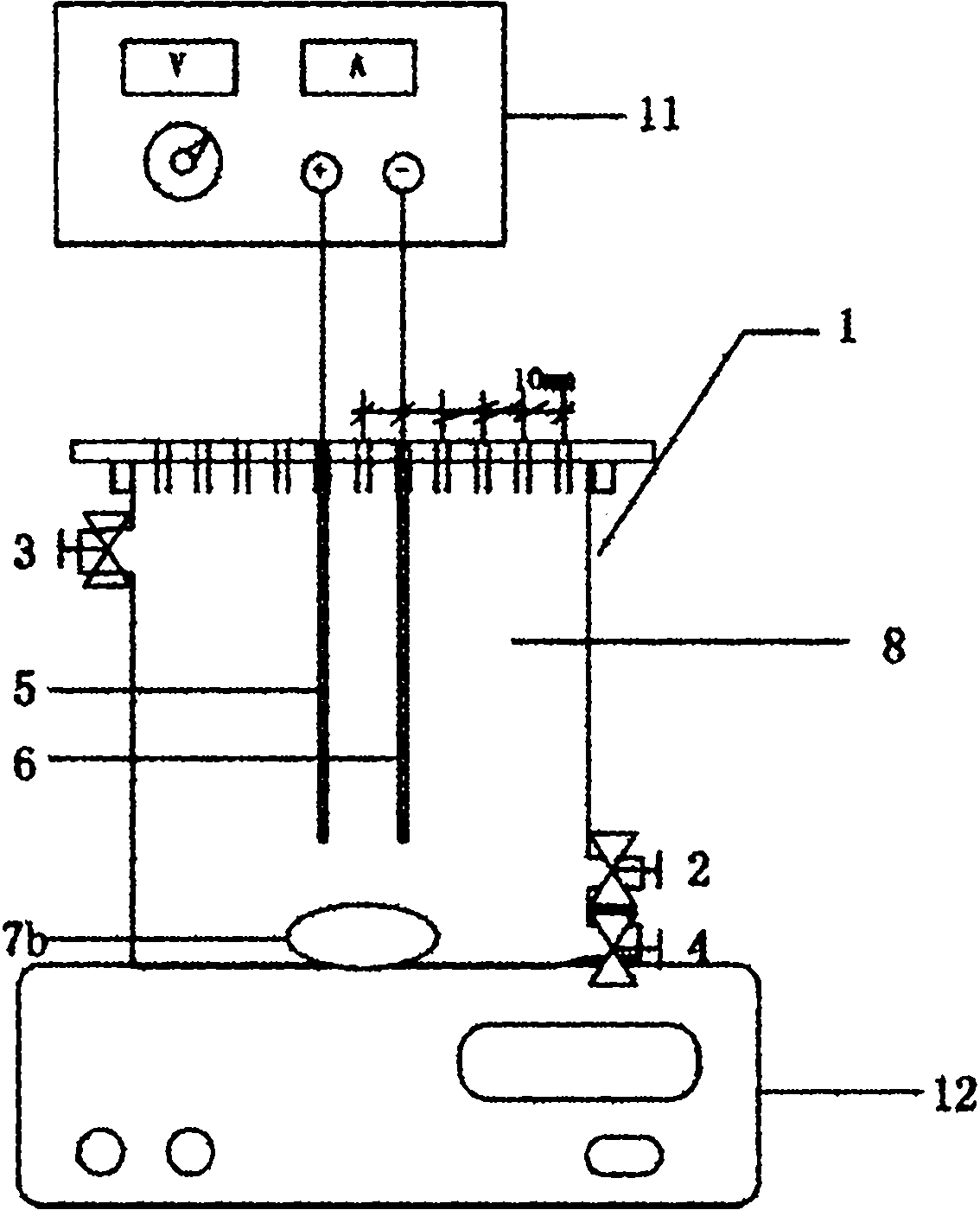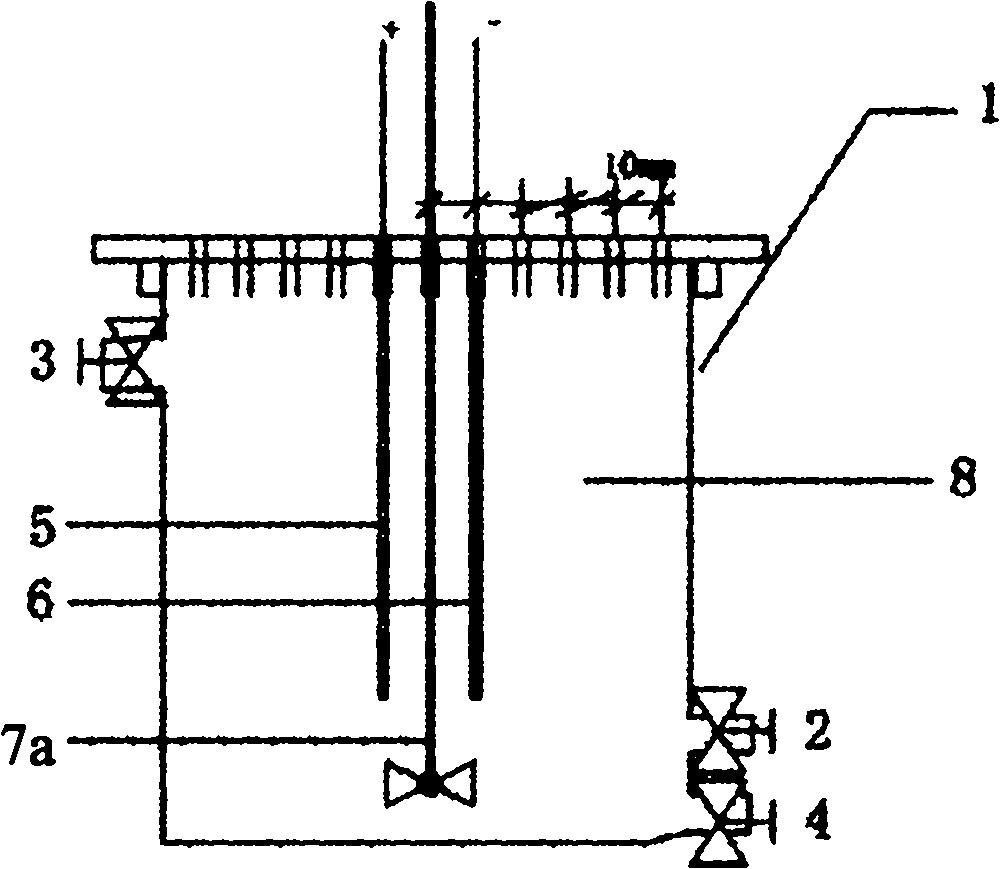Efficient electrocoagulation reactor capable of adjusting electrode distance
A technology of electrode spacing and electroflocculation, which is applied in chemical instruments and methods, water/sewage treatment, water/sludge/sewage treatment, etc. The effect of the service life
- Summary
- Abstract
- Description
- Claims
- Application Information
AI Technical Summary
Problems solved by technology
Method used
Image
Examples
example 1
[0022] Example 1: Study on the effect of electrocoagulation treatment of methyl orange wastewater
[0023] Utilize device of the present invention to process methyl orange waste water, experimental device such as image 3 As shown, the processing volume of the reaction tank 1 is 500ml, the anode 5 is an iron electrode, the cathode 6 is a graphite electrode, the effective area of the cathode and anode electrodes is 10cm×4cm, and the ratio of the effective area of the electrode to the processing volume of the reaction tank is 1:12.5. In the experiment, the electrode distance is controlled by adjusting the distance of the electrode inserted into the hole. In the experiment, the electrode distance is 2.5 cm. The current is controlled by a constant current and constant voltage power supply, and the output voltage range is 0 to 50V. The reaction tank 1 is placed on a magnetic stirrer 12 for stirring (the reaction system is small, so a magnetic stirrer is used for stirring), and...
example 2
[0025] Example 2: Study on the effect of electrode distance on the color removal rate of various wastewater
[0026] Utilize the device of the present invention to process landfill leachate, oil field waste water and methyl orange waste water, experimental device such as image 3 shown. Adjust the pH value of the three kinds of wastewater to 3.0, the cell voltage to 20V, and the concentration of electrolyte KCL to 0.5g L -1 , after 30 minutes of treatment, the relationship between the chromaticity removal rate and the electrode distance is shown in Table 1.
[0027] Table 1 The effect of electrode distance on the chromaticity removal rate of different wastewater
[0028]
[0029] It can be seen from Table 1 that the highest chromaticity removal rates of methyl orange wastewater, oilfield wastewater and landfill leachate are: 97.6%, 97.8%, and 98.7%, respectively, and the optimal electrode spacing is: 25mm, 20mm, and 15mm, respectively. Therefore, the test shows that this ...
PUM
 Login to View More
Login to View More Abstract
Description
Claims
Application Information
 Login to View More
Login to View More - R&D
- Intellectual Property
- Life Sciences
- Materials
- Tech Scout
- Unparalleled Data Quality
- Higher Quality Content
- 60% Fewer Hallucinations
Browse by: Latest US Patents, China's latest patents, Technical Efficacy Thesaurus, Application Domain, Technology Topic, Popular Technical Reports.
© 2025 PatSnap. All rights reserved.Legal|Privacy policy|Modern Slavery Act Transparency Statement|Sitemap|About US| Contact US: help@patsnap.com



